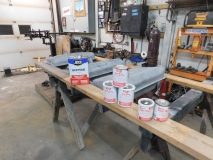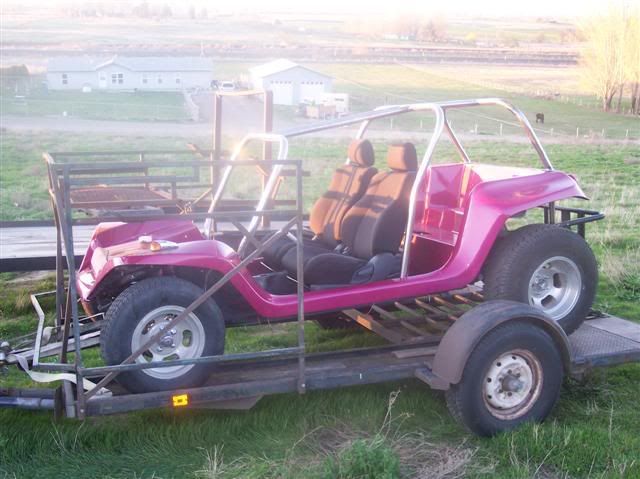Monday was pretty here and I performed the final sand blasting on all three. Tuesday I performed all the final welding and tonight I am performing the internal coatings. Since each internal surface of the fuel tanks have been sandblasted to remove scale, rust and the pickling on the new steel, the insides do not need washing like a normal used tank would, but go straight to step 2, Acetone wash.
Each opening is sealed and about 1 quart of acetone is put into the tank and it becomes "Arm Day" at the fuel tank Gym. I literally swirl, toss, rotate, shake, flip and move the tanks around to get a good interior wash with the Acetone. Then drain the Acetone from the tank. The tanks do not need to totally dry after this, just no puddles in the tank of Acetone. Step 3 is to re-seal all the openings after the Damen Red Kote sealer is dumped in, and round two of Arm Day begins with swirling, rotating, shaking the tanks to get the coating on all interior surfaces of the tank. (Any left over residual of Acetone left adsorbs into the internal coating since Acetone is the solvent used in the coating)
Once they have been thoroughly swished around inside, the Red Kote that is left over is drained out, and the tank left to dry for at least 2 days before applying the external coatings. All in total, it will take about 3 weeks this time of year for the tank to totally cure. If fuel is introduced before totally curing, the curing process will stop and the coating will be compromised. The way to tell when it is totally cured is to smell the inside of the tank. If any Acetone is detected, the process is not done curring. I usually set them in the sun during the day to help cure, but we will be getting snow for the next few days and temps below 30*F, so all three will be in the heated garage for the next few weeks.
I use saw horses so when I drain out the Red Kote, I can position a can underneath to catch the material.















